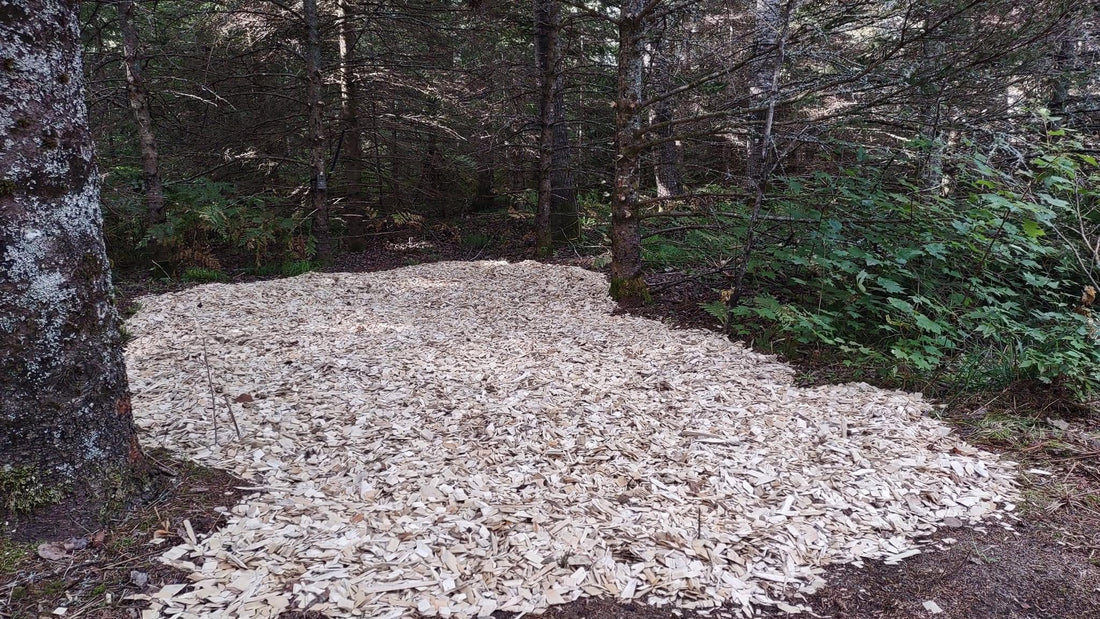Chronic Wasting Disease or "bad CWD" in our hunter lexicon equates to a taboo these days. Emotions run high, words slash. It's an infighting nightmare tbh. The constant quest for the truth of the matter and the passion that evokes such dramatic expressions stem from the same love of our stewardship role and the blessings we oversee. But somehow on the road from heart to mouth, it all gets confusing.
However there is another CWD. a "good CWD" that I believe we shoud be thinking about with just as much passion and fervor.
Coarse Woody Debris or "good CWD" is the driver of our soil and the food web of our beloved properties.
It all starts and ends with Rot, which is the product of fungi and bacteria decomposing material. The bacteria and fungi in the soil collaborate together to break down and disassemble anything that hits the ground. Forbes, grasses, sticks, acorn hulls, whole trees and yes, even our bodies too someday. Grade school taught us that from decomposition, the web of life springs forth.
So when we look at a tree trunk for example, it's basically a huge fertilizer reserve that produces photosynthetic sugars while alive in cooperation with the Mycorrhizae of that tree. However, when it dies and hits the ground the fungi in that geography degrade the material and break it down into the individual elements again to exchange for sugars from the remaining plants in the area, some of which will likely grow to occupy the now open canopy. Meanwhile the influx of biological activity attracts all sorts of wee beasties and that of course attracts predators, this paradigm continues escalting in scale from bacteria, protozoa, nematodes, arthropods, worms, insects, amphibians and so on on up the scale to our game species.
Size matters and in this case it's the particulate size that matters. Big CWD like logs and limbs etc take longer to break down, we can accelerate this by making sure they contact the soil in as many places as possible but it's still gonna take awhile and you're likely to see successional waves of fungi which play different roles over those many years. However, making that large item into smaller CWD like woodchips or sawdust allows it to break down much more rapidly and improves our habitat across a broader region faster. But, if we just shred the large item and allow it to go willy nilly, i.e. allow whatever fungi to just occur, it won't be as rapid, efficient, consistently attractive or yield as much mushroom poundage as a targeted approach can.
This is where Mushroom Food Plots can really shine, whether we are bringing trees down or nature forces our hand. Recognizing that the soil and wildlife in that area need CWD of all sizes and utilizing a targeted approach could be a wise strategy worth your consideration. There's a pretty good chance that you as a habitat manager are dealing with CWD anyway and your CWD actions today are tomorrows rotten results.
While we are talking about the "bad CWD", it's worth mentioning that fungi are where our pharmaceuticals are principally derived. They are known to exhibit many medicinal properties, so feeding them to wildlife does likely have a pharmacological effect. One further, many fungi are used to bioremediate soil and water. The fungi eat E. Coli, Staff and other pathogens, they also snare and consume predatory nematodes.. It's likely that an area with a strong "bad CWD" or EHD issue could benefit immensely from a fungal solution.
Many of the studies published on the issue of bioremediation and pharmacology include SRA/Stropharia or the spawn in your Mushroom Food Plot and it does consistenly rank in the top tier.
Sooo, to bring this thing full circle, Coarse Woody Debris is the CWD we are really underestimating for a litany of reasons and in a world where everything costs more, using what we already have in a smarter fashion just makes sense.

